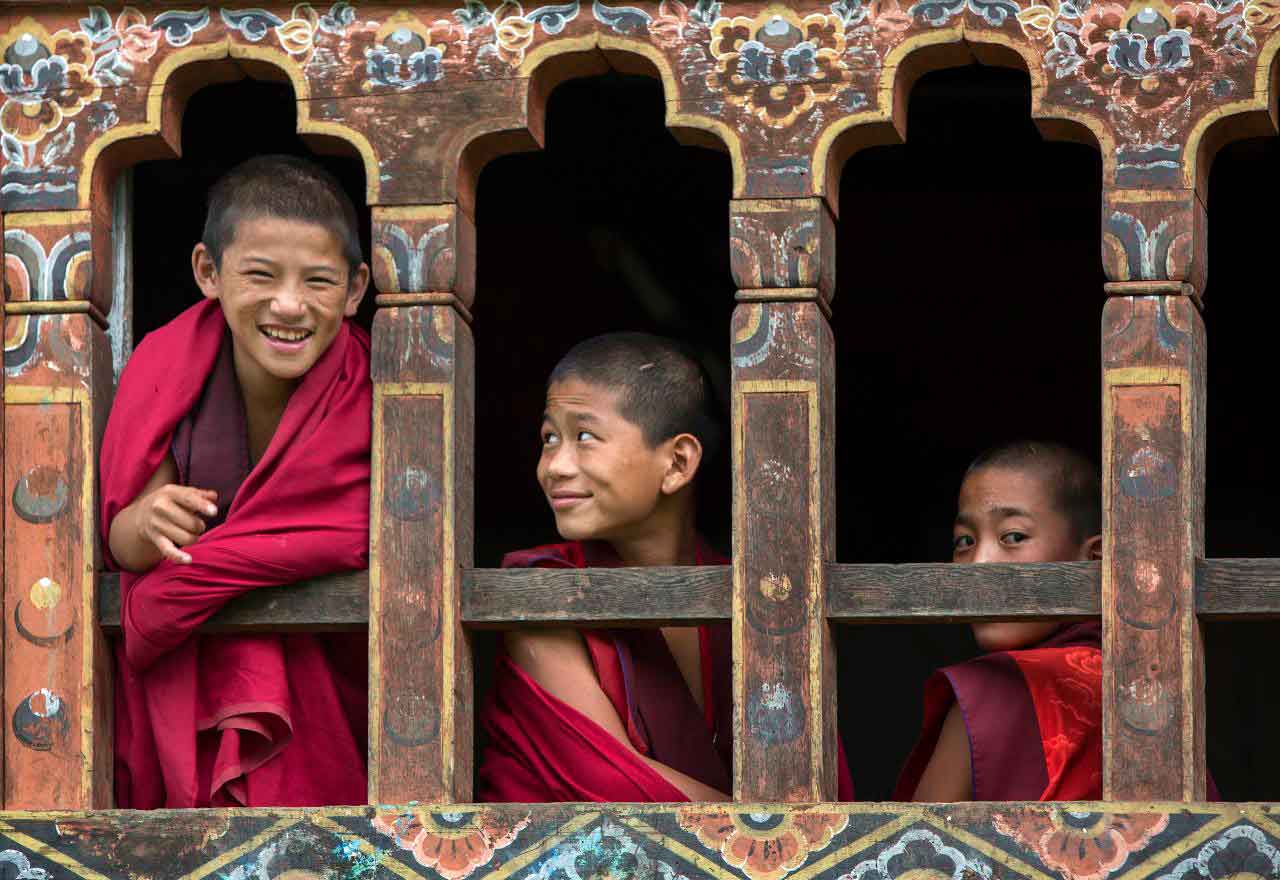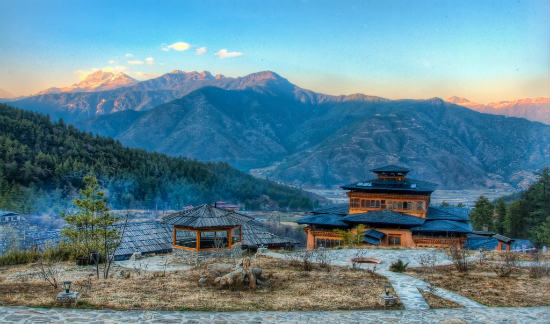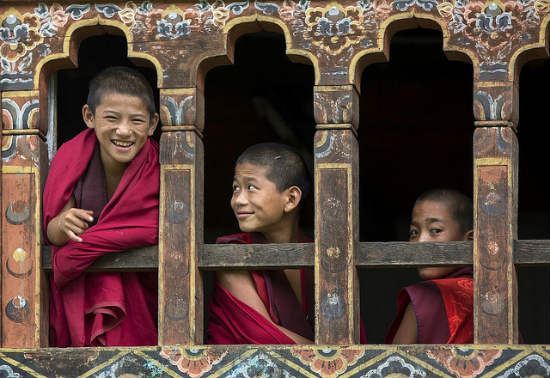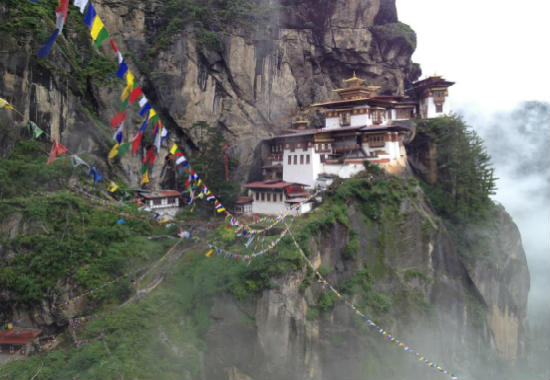

It was a rickety little plane that took us into Bhutan, but it might as well have been one of the nation’s eponymous thunder dragons. I’ll never forget the way the countryside looked from above: the colorful, tiered houses rising like paper lanterns out of the mist and the stately blue pines crowning each mountain ridge. One of my fellow American students turned to the pleasant-looking middle-aged woman sitting next to her and said in disbelief, “You live here?” The woman smiled — a shy but deeply warm smile that I would come to recognize as distinctly Bhutanese — and nodded, amused by our enchantment.
I hadn’t heard much about Bhutan before I decided to study abroad. As it turned out, neither had most people: only once or twice did I tell someone where I was headed and hear anything other than “Bhutan? Where’s that?” Bhutan is a small country, about the size of Ohio, situated between China and India. Known for its concept of “Gross National Happiness,” it’s also the only country to declare itself 100% organic, and — interestingly enough — the only country in the world without a single traffic light, even in its capital. (In case you were wondering, traffic in Paro is directed by an enthusiastic and extremely well-dressed traffic cop.)
For the first week of our stay, we traveled the country in a giant bus that careened around the heart-stopping curves of Bhutan’s narrow and mountainous highways with alarming speed, honking when it passed another vehicle or a group of grinning children playing in the potholes. We visited museums and temples, holy sites and wildlife preserves. We met Bhutan’s national animal, the takin, an unassuming mammal that appears to have resulted from the union of a moose and Schnauzer.
We went to stupas where little old women sat turning prayer wheels and chanting, unmoved for hours. We visited a dress shop, where each of us was outfitted with traditional Bhutanese garb: for the women it was kiras, a kind of embroidered jacket paired with an impossibly tight wrap skirt. (I never did quite learn the trick of tying these – which didn’t prove to be a problem, as there were always chuckling Bhutanese women around to drag you into a corner, half-undress you, and re-tie your skirt correctly.)
The majority of our program was spent at the Ugyen Wangchuck Institute for Conservation and Environment, which was once the first king’s summer palace. Bhutan is a constitutional monarchy, a recent development after centuries of absolute monarchy.
The story of how this came about is almost unbelievable: the king declared that the people should have more power in the ruling of their nation, and called for an end to the absolute monarchy; the people of Bhutan, however, were dismayed by this change, being fervently loyal to the royal institution. Because of this admiration, the royal family continues to exist essentially as a figurehead even as the government moves toward a more democratic approach. It’s hard to overestimate the passion with which the Bhutanese people love their king; it makes the U.K.’s fascination with William and Kate look half-hearted at best.

One of our most fascinating field trips was to the temple of Drukpa Kunley, the “fertility saint” honored throughout the country with likenesses of his holy symbol: a phallus. Walk through any shy, conservative Bhutanese village and you’ll see this symbol painted on numerous homes and storefronts, often adorned with facial features or wings. Bhutan, like so many places, is a country of contradictions.
Countless moments during my stay in Bhutan caused me to stop in my tracks and marvel at the beauty of the land and its people, whether it was the sight of frayed prayer flags fluttering like ghosts through the trees or the plump, beaming smile of a Bhutanese toddler wobbling in a napkin-sized kira. Like the rest of the world, Bhutan is hurtling toward an unknown future – but for its people and for me, I hope that Bhutan’s commitment to the preservation of its culture and its resources persists.
If You Travel to Bhutan
Tiger’s Nest Temple
Don’t miss the Tiger’s Nest Temple. This breathtaking site nestled on the mountainside in an ethereal forest. Legend has it that the holy man Guru Rinpoche once flew there on the back of a tigress. Unless you have similar powers, it’s a healthy hike – but well worth the effort.

Visiting Chimi Lhakhang
The temple of the “Divine Madman” Drukpa Kunley, this is a quirky and fascinating celebration of both fertility and enlightenment. While the ubiquitous phallus symbols are not for the prudish, you won’t see anything more graphic than you would in an anatomy textbook.
https://www.lonelyplanet.com/bhutan/chimi-lhakhang
Kingdom of Bhutan
https://www.kingdomofbhutan.com/
Tourism Council of Bhutan
https://www.tourism.gov.bt/
Druk Air (Bhutan’s airline)
https://www.drukair.com.bt/
- How to Get Around in Sydney: A Local’s Guide to Traveling Around Sydney - April 24, 2024
- The Low-Key Magic of Ghent, Belgium - April 22, 2024
- Discover the Hidden Charm of Extremadura in Spain - April 20, 2024
